A Salivary Effector Aids in Brown Planthopper Feeding on Rice Plants
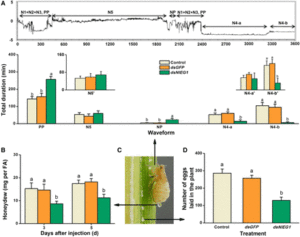 Herbivory-induced plant cell wall modifications play an important role in deterring herbivory. Modified cell walls not only act as physical defenses against herbivores by enhancing the mechanical hardness of plant tissues but also reduce the digestibility of food for herbivores, thereby functioning as the first layer of defense against herbivores. In response, herbivores have evolved the capacity to suppress and circumvent these plant defenses through the release of effectors. Herbivores can secrete salivary plant cell wall-degrading enzymes such as cellulases (consisting of endo-β-1, 4-glucanases and β-glucosidases) and pectinases to degrade plant cell walls.
Herbivory-induced plant cell wall modifications play an important role in deterring herbivory. Modified cell walls not only act as physical defenses against herbivores by enhancing the mechanical hardness of plant tissues but also reduce the digestibility of food for herbivores, thereby functioning as the first layer of defense against herbivores. In response, herbivores have evolved the capacity to suppress and circumvent these plant defenses through the release of effectors. Herbivores can secrete salivary plant cell wall-degrading enzymes such as cellulases (consisting of endo-β-1, 4-glucanases and β-glucosidases) and pectinases to degrade plant cell walls.
The brown planthopper Nilaparvata lugens is a major insect pest of rice (Oryza sativa) in Asia. After landing on plants, the brown planthopper feeds by sucking the phloem sap. Ji et al. (Plant Physiol. 173: 1920–1932) have discovered a salivary endo-β-1,4-glucanase (NlEG1) that is secreted into rice plants by brown planthoppers. Silencing NlEG1 reduces the food intake, mass, survival, and fecundity of brown planthoppers feeding on rice plants. By contrast, NlEG1 silencing had only a small effect on the survival rate of brown planthoppers raised on an artificial diet. Moreover, NlEG1 secreted by brown planthoppers did not elicit the production of the defense-related signal molecules salicylic acid, jasmonic acid, and jasmonoyl-Ile in rice. The authors suggest that NlEG1 enables the brown planthopper’s stylet to reach the phloem by degrading the cell wall defenses induced in rice plants in response to herbivory.


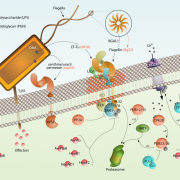
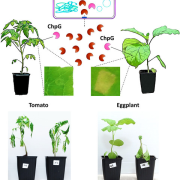
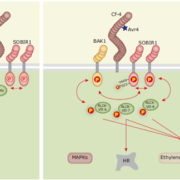
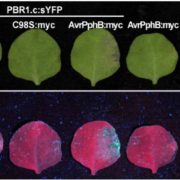

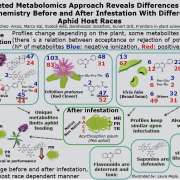


Leave a Reply
Want to join the discussion?Feel free to contribute!